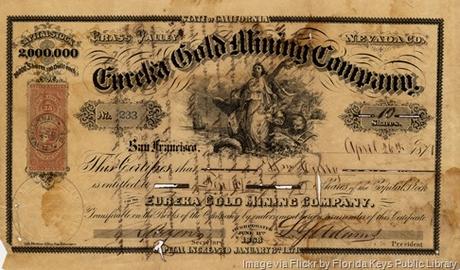 I’ll never forget that great sense of excitement I felt when I incorporated my first business, and realized that I was now the proud owner of 10 million shares of common stock. Of course, initially these founder’s shares were worth essentially nothing, but it doesn’t take much of an imagination to grasp the possibilities. It’s great motivation for every entrepreneur to get that value up quickly.
I’ll never forget that great sense of excitement I felt when I incorporated my first business, and realized that I was now the proud owner of 10 million shares of common stock. Of course, initially these founder’s shares were worth essentially nothing, but it doesn’t take much of an imagination to grasp the possibilities. It’s great motivation for every entrepreneur to get that value up quickly.
Unfortunately, in my years since as a small business advisor, I have seen too many founders squander this asset through a lack of understanding of some basic legal and operational issues, or by handing out nominally “free” stock to the wrong people at the wrong time. Now is the time to talk to a qualified attorney, and get some discipline in place for the following strategies:
-
Manage founder’s shares like gold with partners. Even though initial stock has no market value today, it is extremely valuable in dividing equity ownership between co-founders, investors, and early partners. Make sure you make allocations commensurate with commitments and contributions. Don’t allow personal assumptions or verbal offers to go undocumented. These will be back to bite you later when you achieve unicorn status.
-
Register your stock early with the IRS to minimize taxes. Waiting to incorporate until you have investors gives your founder’s shares immediate value, and the IRS will want to collect on that value when you can least afford it. Every entrepreneur should incorporate well before this time and file an 83(b) election within 30 days of incorporation.
-
Always specify a vesting period for new partners. Where possible, pay out committed shares over time as they are earned, as opposed to all up front. Typically, vesting in startups occurs monthly over four years, starting with the first 25 percent vesting only after a participant has satisfied commitments for at least 12 months (one year cliff).
-
Reserve the right of first refusal to buy shares back. To retain control of your business, you need to reclaim stock shares from anyone leaving the startup for any reason. Otherwise, later stock value growth may be lost or used against you before you can capitalize on it. Buying back stock on the open market may cost a huge premium.
-
Manage dilution with proper use of new investment terms. When new equity investors purchase a share of your company, the re-allocation of existing shares should be based on a formula that maximizes the number of your remaining founder shares. Some reduction is ownership percentage should be expected with every new investor.
-
Maximize your own vesting if the business is acquired early. If you are pushed out by an acquisition due to unusual success or strategy conflict before the normal vesting schedule comes to a close, only an accelerated vesting clause can save your original percentage. Here is another case where work up front is required to make this happen.
-
Negotiate an upgrade from common shares to preferred stock. Investors typically demand preferred stock to give them more control and first payouts, but these advantages can be at least partially offset (up to 20 percent) if you plan ahead. The acceptance of this option is now common, even though introduced only a few years ago.
-
Set maximum board seats and select criteria in bylaws. Typically, every new investor expects a board seat, which can lead to an operational nightmare and loss of control. I recommend a limit to no more than five board members, with at least two being from within the company. This assures you a reasonable voice in strategy and investments.
Sometimes opting out as Founder and CEO, as your company scales up, or even being pushed out, is not a bad thing, as long as you still retain a reasonable percentage of your original founder’s shares. Most true entrepreneurs I know are really good at starting companies, but are not ready for the focus on processes and personnel that come with a more mature organization.
If you have done the proper homework along the way as suggested here, you won’t be a part of one of those sad stories of a new venture selling for millions of dollars, or going public, with the founder being squeezed out of all the gains. Remember, founder’s shares may be just paper when you get them, but they can be a goldmine if you treat them right.

